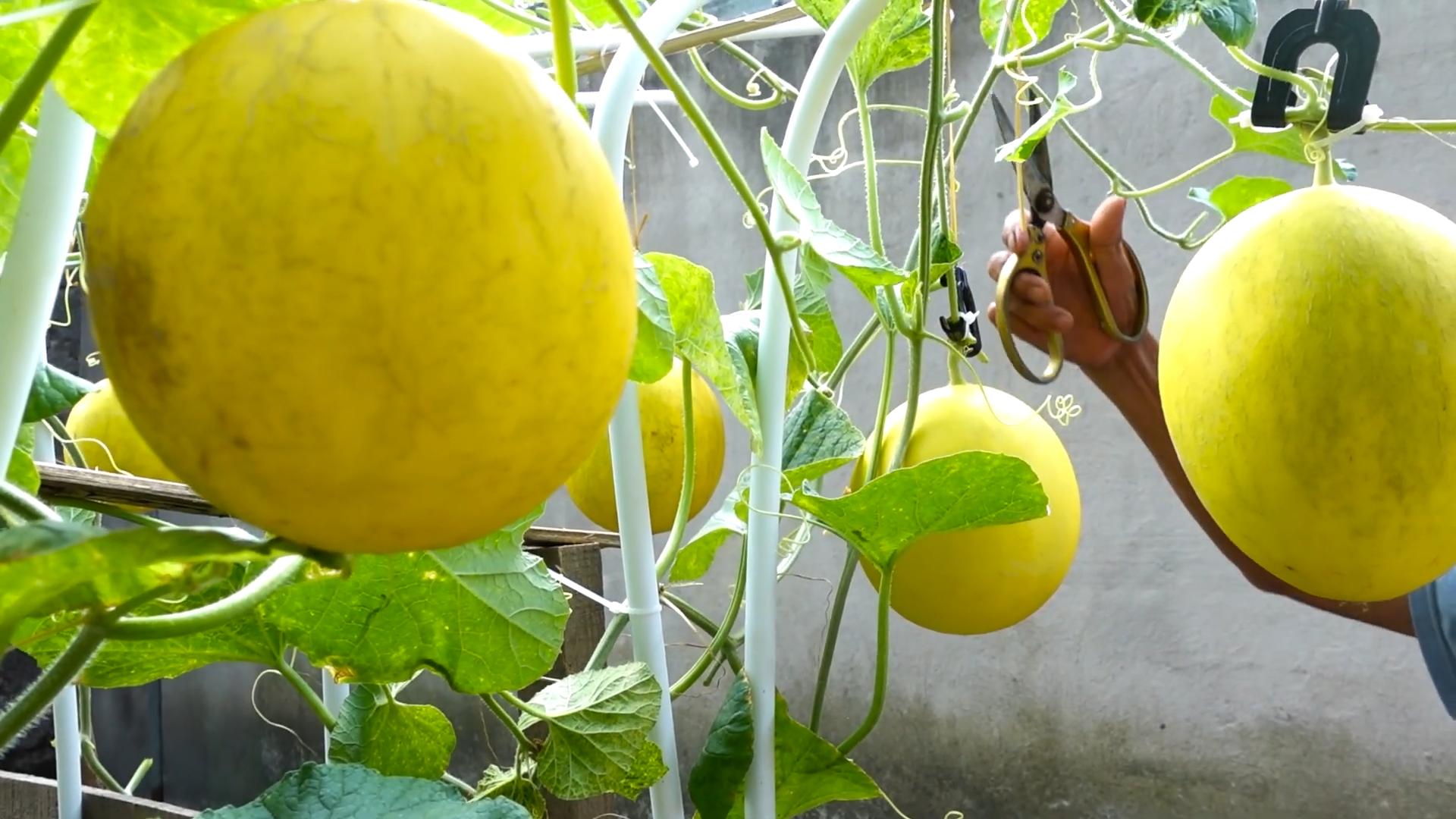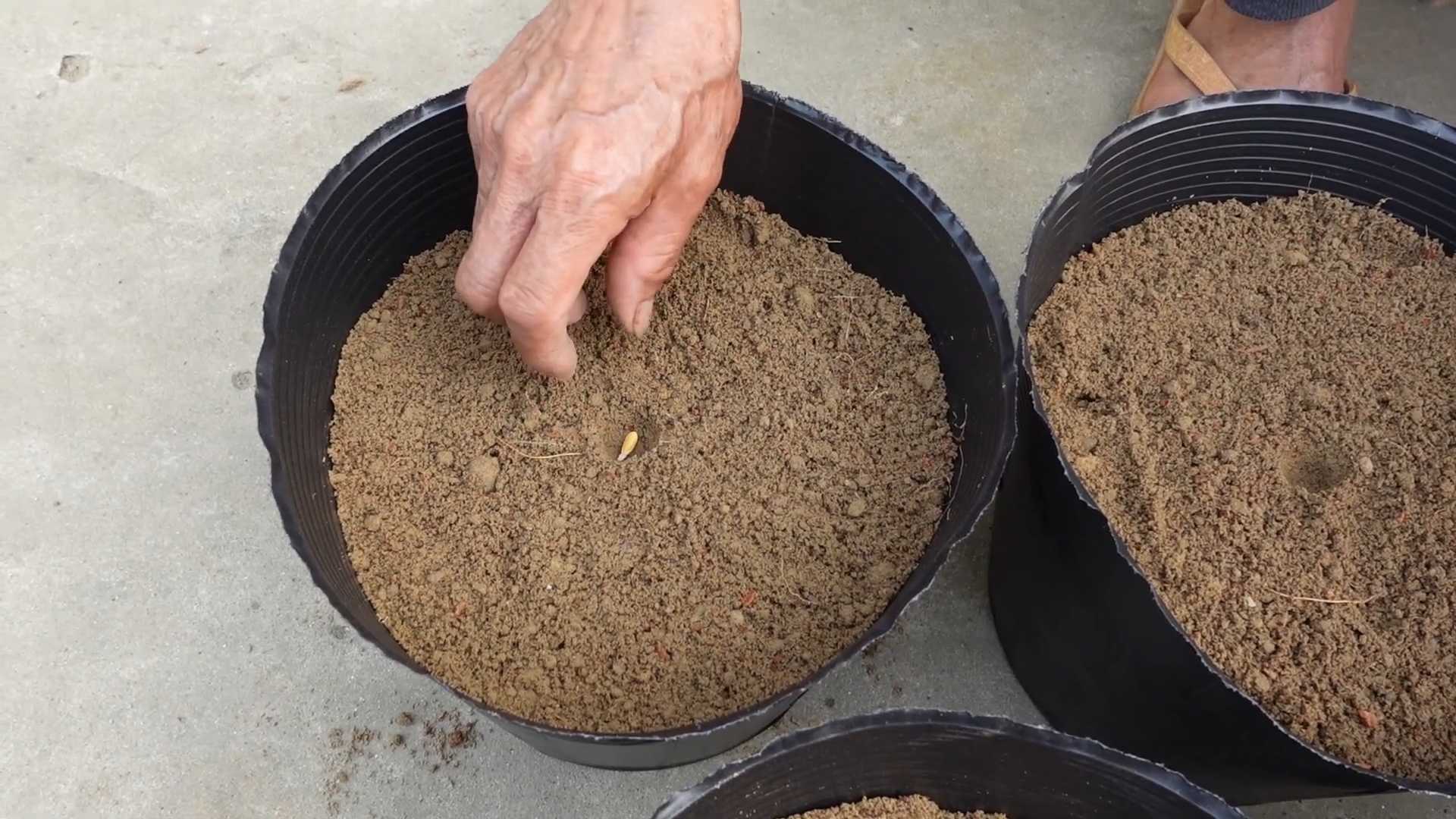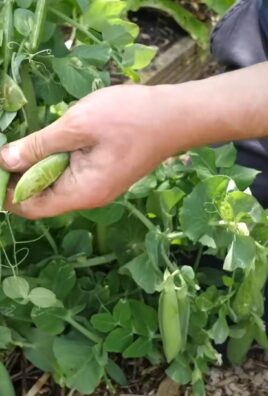Grow Sweet Cantaloupe at Home – imagine biting into a juicy, sun-ripened cantaloupe that you nurtured from seed to fruit, right in your own backyard! Forget those bland, store-bought melons; we’re diving into the delicious world of homegrown cantaloupe, and I’m here to share some simple DIY tricks that will have you harvesting sweet, fragrant melons in no time.
For centuries, cantaloupe has been cherished for its refreshing taste and nutritional benefits. Originating in Africa and India, this delightful fruit made its way across the globe, becoming a summertime staple in gardens and kitchens worldwide. But let’s be honest, achieving that perfect cantaloupe sweetness can sometimes feel like a gamble. That’s where these DIY hacks come in!
Why struggle with lackluster melons when you can unlock the secrets to cantaloupe success? This article is packed with easy-to-follow tips and tricks that will help you grow sweet cantaloupe at home, even if you’re a beginner gardener. We’ll cover everything from soil preparation and seed starting to watering techniques and pest control, ensuring you have all the knowledge you need to enjoy a bountiful harvest. So, grab your gardening gloves, and let’s get started on your cantaloupe-growing adventure!

Grow Delicious Cantaloupe at Home: A DIY Guide
Hey there, fellow gardening enthusiasts! I’m so excited to share my tried-and-true method for growing sweet, juicy cantaloupe right in your own backyard. Forget those bland, store-bought melons – nothing beats the flavor of a homegrown cantaloupe, ripened to perfection under the summer sun. This guide will walk you through every step, from seed to harvest, ensuring you have a bountiful cantaloupe crop. Let’s get started!
Choosing the Right Cantaloupe Variety
Before we dive into the nitty-gritty, let’s talk about choosing the right cantaloupe variety. There are tons of options out there, each with its own unique characteristics. Here’s what I consider when making my selection:
* Climate: Some varieties are better suited for warmer climates, while others can tolerate cooler temperatures. Check your local growing zone to ensure you pick a variety that will thrive in your area.
* Space: Cantaloupes need room to spread, so consider the size of your garden. Bush varieties are more compact and ideal for smaller spaces, while vining varieties require more room to roam.
* Disease Resistance: Look for varieties that are resistant to common cantaloupe diseases like powdery mildew and fusarium wilt. This will save you a lot of headaches down the road.
* Days to Maturity: This refers to the number of days it takes for the cantaloupe to ripen after planting. Choose a variety with a shorter maturity time if you have a shorter growing season.
* Personal Preference: Ultimately, the best variety is the one you enjoy the most! Consider the size, sweetness, and texture of the melon when making your decision.
Some popular cantaloupe varieties include:
* Hales Best Jumbo: A classic variety known for its sweet flavor and large size.
* Athena: A disease-resistant variety that produces uniform, high-quality melons.
* Ambrosia: A very sweet and aromatic variety that’s perfect for eating fresh.
* Minnesota Midget: A compact variety that’s ideal for small gardens.
Starting Your Cantaloupe Seeds
You can either direct sow your cantaloupe seeds in the garden or start them indoors. I prefer starting them indoors because it gives them a head start and protects them from pests and diseases.
Here’s how I do it:
1. Gather Your Supplies: You’ll need cantaloupe seeds, seed starting trays or pots, seed starting mix, a spray bottle, and a heat mat (optional).
2. Prepare the Seed Starting Mix: Moisten the seed starting mix with water until it’s damp but not soggy.
3. Sow the Seeds: Fill the seed starting trays or pots with the moistened mix. Plant two or three seeds per cell or pot, about ½ inch deep.
4. Water Gently: Use a spray bottle to gently water the seeds. Avoid overwatering, as this can cause the seeds to rot.
5. Provide Warmth: Cantaloupe seeds need warmth to germinate. Place the seed starting trays or pots on a heat mat or in a warm location.
6. Maintain Moisture: Keep the seed starting mix consistently moist but not soggy. Check the moisture level daily and water as needed.
7. Provide Light: Once the seeds germinate, provide them with plenty of light. Place the seed starting trays or pots under grow lights or in a sunny window.
8. Thin Seedlings: Once the seedlings have developed their first true leaves, thin them to one plant per cell or pot. Choose the strongest, healthiest seedling and snip off the others at the soil line.
Preparing the Garden Bed
Cantaloupes need a sunny location with well-drained soil. Here’s how I prepare my garden bed:
1. Choose a Sunny Location: Cantaloupes need at least 6-8 hours of sunlight per day.
2. Test the Soil: Before planting, test the soil to determine its pH and nutrient levels. Cantaloupes prefer a soil pH of 6.0-6.8.
3. Amend the Soil: Amend the soil with compost or other organic matter to improve drainage and fertility.
4. Create Mounds or Rows: Cantaloupes grow best on raised mounds or rows. This helps to improve drainage and warm the soil.
5. Add Fertilizer: Incorporate a slow-release fertilizer into the soil before planting. Choose a fertilizer that’s high in phosphorus and potassium, which are essential for fruit development.
Transplanting Your Cantaloupe Seedlings
Once the danger of frost has passed and the soil has warmed up, it’s time to transplant your cantaloupe seedlings into the garden.
1. Harden Off the Seedlings: Before transplanting, harden off the seedlings by gradually exposing them to outdoor conditions. Start by placing them outside for a few hours each day, gradually increasing the amount of time they spend outdoors.
2. Dig Holes: Dig holes in the prepared garden bed that are slightly larger than the root balls of the seedlings. Space the holes about 2-3 feet apart.
3. Remove Seedlings from Pots: Gently remove the seedlings from their pots, being careful not to damage the roots.
4. Plant the Seedlings: Place the seedlings in the holes and backfill with soil. Gently firm the soil around the base of the plants.
5. Water Thoroughly: Water the seedlings thoroughly after planting.
6. Mulch: Apply a layer of mulch around the plants to help retain moisture, suppress weeds, and regulate soil temperature. I like to use straw or shredded leaves.
Caring for Your Cantaloupe Plants
Cantaloupes need consistent care to thrive. Here’s what I do to keep my plants healthy and productive:
* Watering: Water deeply and regularly, especially during hot, dry weather. Avoid overhead watering, as this can promote fungal diseases. Drip irrigation is the best way to water cantaloupes.
* Fertilizing: Fertilize every few weeks with a balanced fertilizer.
* Weeding: Keep the garden bed free of weeds, which can compete with the cantaloupes for nutrients and water.
* Pruning: Prune the vines to encourage fruit production. Remove any suckers (small shoots that grow from the base of the plant) and any yellowing or diseased leaves.
* Pest Control: Monitor the plants for pests like aphids, squash bugs, and cucumber beetles. Use organic pest control methods to control these pests.
* Disease Control: Monitor the plants for diseases like powdery mildew and fusarium wilt. Use organic disease control methods to prevent and treat these diseases.
Supporting the Fruit
As the cantaloupes grow, they may need support to prevent them from rotting on the ground. Here are a few ways to support the fruit:
* Use a Trellis: Train the vines to grow up a trellis. This will keep the fruit off the ground and improve air circulation.
* Place the Fruit on a Board or Brick: Place a board or brick under each cantaloupe to keep it off the ground.
* Use a Sling: Make a sling out of netting or fabric to support the fruit.
Harvesting Your Cantaloupe
Harvesting cantaloupe at the right time is crucial for getting the best flavor. Here’s how I know when my cantaloupes are ready to pick:
1. Check the Color: The skin of the cantaloupe should turn from green to tan or yellow.
2. Check the Stem: The stem should easily slip from the vine when the cantaloupe is ripe. This is called “slipping.” If you have to tug on the cantaloupe, it’s not ready yet.
3. Smell the Melon: A ripe cantaloupe will have a sweet, musky aroma.
4. Tap the Melon: A ripe cantaloupe will sound hollow when tapped.
Once the cantaloupe is ripe, gently twist it from the vine. Store the cantaloupe in the refrigerator for up to a week.
Troubleshooting Common Cantaloupe Problems
Even with the best care, you may encounter some problems when growing cantaloupes. Here are some common problems and how to fix them:
* Poor Germination: If your cantaloupe seeds aren’t germinating, make sure the soil is warm enough and that you’re not overwatering.
* Yellowing Leaves: Yellowing leaves can be caused by a variety of factors, including nutrient deficiencies, overwatering, and disease. Check the soil pH and nutrient levels, and make sure the plants are getting enough water.
* Powdery Mildew: Powdery mildew is a fungal disease that causes a white, powdery coating on the leaves. Treat powdery mildew with a fungicide or by spraying the plants with a solution of baking soda and

Conclusion
So, there you have it! Growing your own sweet cantaloupe at home is not only achievable, but it’s also incredibly rewarding. Imagine biting into a juicy, sun-ripened cantaloupe that you nurtured from seed to fruit – the flavor is simply unmatched by anything you can find in a grocery store. This DIY project offers a unique opportunity to connect with nature, learn about the growing process, and enjoy the unparalleled taste of homegrown produce.
This isn’t just about saving money (though that’s a definite perk!). It’s about knowing exactly where your food comes from, avoiding harmful pesticides, and experiencing the satisfaction of creating something delicious with your own two hands. Plus, growing cantaloupe can be a fun and educational activity for the whole family. Get the kids involved in planting the seeds, watering the vines, and watching the magic unfold.
Why is this DIY trick a must-try? Because it empowers you to control the quality and flavor of your cantaloupe. You can choose the specific variety you want to grow, ensuring you get the sweetness and texture you prefer. You can also tailor your growing practices to your local climate and soil conditions, maximizing your chances of success.
Looking for variations? Consider growing different varieties of cantaloupe to discover your favorite. Honeydew melons, for example, require similar growing conditions and can be planted alongside your cantaloupe. You can also experiment with different trellising methods to save space and improve air circulation around the vines. Another fun variation is to try growing cantaloupe in containers, which is perfect for those with limited garden space. Just be sure to choose a large container and provide adequate support for the growing vines.
Don’t be intimidated if you’re a beginner gardener. Growing cantaloupe may seem daunting at first, but with a little planning and effort, you can absolutely succeed. Remember to provide your plants with plenty of sunlight, well-drained soil, and consistent watering. And don’t be afraid to ask for help from local gardening experts or online communities.
We wholeheartedly encourage you to give this DIY trick a try. The taste of homegrown cantaloupe is truly worth the effort. And once you experience the joy of harvesting your own sweet, juicy melons, you’ll be hooked!
We’d love to hear about your experiences growing cantaloupe at home. Share your tips, tricks, and photos in the comments below. Let’s create a community of cantaloupe enthusiasts and inspire others to get growing!
Frequently Asked Questions (FAQ)
What is the best time to plant cantaloupe seeds?
The ideal time to plant cantaloupe seeds is after the last frost, when the soil has warmed to at least 60°F (15°C). Cantaloupe thrives in warm weather, so planting too early can stunt their growth or even kill them. In most regions, this means planting in late spring or early summer. You can start seeds indoors 3-4 weeks before the last expected frost to get a head start. If you live in a warmer climate with a longer growing season, you may be able to plant cantaloupe seeds directly in the ground.
How much sunlight do cantaloupe plants need?
Cantaloupe plants require at least 6-8 hours of direct sunlight per day to thrive. Choose a planting location that receives full sun throughout the day. If your garden doesn’t get enough sunlight, you may need to supplement with grow lights. Insufficient sunlight can lead to weak plants, poor fruit production, and bland-tasting melons.
What type of soil is best for growing cantaloupe?
Cantaloupe plants prefer well-drained, fertile soil with a pH between 6.0 and 6.8. Amend your soil with compost or other organic matter to improve drainage and fertility. Avoid heavy clay soils, as they can retain too much moisture and lead to root rot. If you have clay soil, consider growing cantaloupe in raised beds or containers.
How often should I water my cantaloupe plants?
Water your cantaloupe plants deeply and regularly, especially during hot, dry weather. Aim to keep the soil consistently moist but not waterlogged. Water at the base of the plants to avoid wetting the foliage, which can increase the risk of fungal diseases. As the fruits begin to ripen, reduce watering slightly to concentrate the sugars and improve the flavor.
Do cantaloupe plants need fertilizer?
Yes, cantaloupe plants benefit from regular fertilization. Apply a balanced fertilizer (e.g., 10-10-10) at planting time and then again when the vines begin to flower. You can also side-dress your plants with compost or aged manure throughout the growing season. Avoid over-fertilizing, as this can lead to excessive vine growth and reduced fruit production.
How do I know when my cantaloupe is ripe?
There are several signs that indicate a cantaloupe is ripe. The most reliable sign is the “slip” – when the stem easily separates from the vine with a gentle tug. Other signs include a change in color from green to tan or yellow, a sweet aroma near the stem end, and a slightly softened rind. Avoid picking cantaloupe that are still green or hard, as they will not ripen properly off the vine.
What are some common pests and diseases that affect cantaloupe plants?
Common pests that affect cantaloupe plants include aphids, squash bugs, cucumber beetles, and vine borers. Common diseases include powdery mildew, downy mildew, and fusarium wilt. To prevent pest and disease problems, practice good garden hygiene, such as removing weeds and debris, providing adequate air circulation, and using disease-resistant varieties. You can also use organic pest control methods, such as insecticidal soap or neem oil.
Can I grow cantaloupe in containers?
Yes, you can grow cantaloupe in containers, but you’ll need to choose a large container (at least 20 gallons) and provide adequate support for the growing vines. Use a well-draining potting mix and fertilize regularly. Container-grown cantaloupe may require more frequent watering than those grown in the ground. Choose a compact or bush variety of cantaloupe for best results in containers.
How do I trellis cantaloupe plants?
Trellising cantaloupe plants can save space, improve air circulation, and make harvesting easier. You can use a variety of trellising methods, such as a vertical trellis, a horizontal trellis, or a teepee trellis. Secure the vines to the trellis with twine or plant ties. For heavier fruits, you may need to provide additional support with slings or netting.
How can I improve the sweetness of my cantaloupe?
Several factors can influence the sweetness of your cantaloupe, including sunlight, water, and soil fertility. Ensure your plants receive plenty of sunlight and water them regularly, but reduce watering slightly as the fruits begin to ripen. Amend your soil with compost or other organic matter to improve fertility. You can also try growing cantaloupe in a raised bed or container to improve drainage and soil warmth. Choosing a variety known for its sweetness is also crucial.





Leave a Comment